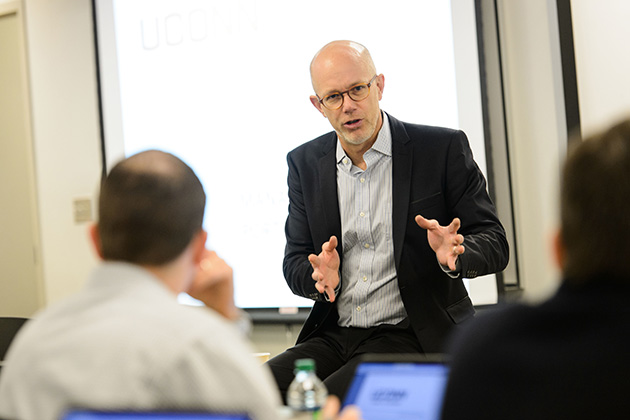Research & Discovery
Decoding Neurological Mechanisms for Compensation in Dyslexia, $3 Million NIH Grant
This work will advance theories of compensatory mechanisms in dyslexia, and ultimately may improve strategies to promote intervention models and success in both children and adults with dyslexia.
October 18, 2018 | Anna Zarra Aldrich '20 (CLAS), Office of the Vice President for Research
Male Fertility Test Developers Win Venture Competition
Through the Wolff New Venture Competition, a pair of biomedical engineering doctoral candidates won $20,000 to further develop an in-home device to measure male fertility.
October 17, 2018 | Mike Enright '88 (CLAS), University Communications
Industry-Academic Program to Grow Entrepreneurial Know-How
The new program will provide aspiring entrepreneurs working as academic or industry researchers with customized training to help turn their technologies into businesses and products.
October 17, 2018 | Jessica McBride, PhD
Unique Shrub Hybrid Blossoms into Patent
UConn horticulturalist, Mark Brand, has produced a new hybrid of the popular purple-leaf sand cherry that maintains desirable aesthetic elements of the traditional plant while also being easier to manage and grow with minimal care.
October 16, 2018 | Anna Zarra Aldrich '20 (CLAS), Office of the Vice President for Research
Infants Are More Likely to Learn When With a Peer
Social partners not only provide information by showing us how to do things, but also provide motivation for learning, says a study by UConn and University of Washington researchers.
October 16, 2018 | Kristen Cole
Calm the Immune System, Halt Premature Birth
UConn Health researchers found that a drug that blocks the cytokine GM-CSF may reduce the number of preterm births.
October 12, 2018 | Kim Krieger
Groundwater’s Role in Legacy Nitrogen Transport
By developing a robust approach to quantify legacy nitrogen in streams and rivers, Helton’s research will produce valuable insights into how nitrogen from years gone by may affect water quality today.
October 11, 2018 | Anna Zarra Aldrich '20 (CLAS), Office of the Vice President for Research
Making Research Connections at UConn
Riley Blumenfield, a materials science and engineering student, Honors Program STEM scholar, and president of engineering sorority Phi Sigma Rho came to UConn knowing she wanted to be involved with research, but she didn’t know where to start. After attending an annual event to expose undergrads to a host of opportunities, she not only found […]
October 10, 2018 | Carson Stifel ‘21 (CLAS), Office of the Vice President for Research
Making Research Connections at UConn
Riley Blumenfield, a materials science and engineering student, discovered her passion for research thanks to Research Connections, an annual networking event for students and faculty.
October 10, 2018 | Carson Stifel ‘21 (CLAS), Office of the Vice President for Research
Rating Companies’ Cybersecurity Preparedness May Lead to Stronger Sites
Increased awareness about certain types of cybersecurity breaches leads companies to make improvements, says a new study co-authored by a UConn researcher.
October 9, 2018 | Combined Reports








